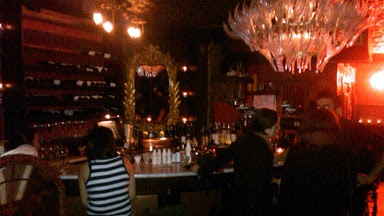At this summer's Tales of the Cocktail convention in New Orleans, in a room off the lobby of Hotel Monteleone, was an impromptu bookstore featuring only books about beer, spirits and cocktails. The pop-up book shop is a feature of every Tales. This year, the best-selling tome was, somewhat predictably, David Wondrich's "Punch." The second-best-selling volume, however, was a dark horse: a thin, square, white, self-published item called "Beta Cocktails."
"Beta Cocktails" is the second coming of "Rogue Cocktails," a tiny book put out a couple years ago by two New Orleans bartenders with the intense names of Kirk Estopinal and Maksym Pazuniak (called Maks for short). They then worked at New Orleans' much-vaunted cocktail den Cure. (Kirk is still there, while Maks has moved to New York.) Their intent in putting out the booklet was to shake up the working cocktail paradigm by introducing some truly radical recipes that relied not on the usual liquors and liqueurs, but Italian amari and bitters.
I stupidly did not buy a copy of "Rogue Cocktails" when I first saw it in July 2009. But I sampled a few of the cocktails therein at Cure, and was duly impressed by their originality. They frankly amazed me. One used Angostura bitters as its base, the other Peychaud's bitters. As anyone knows, these products are typically employed by the dashful. Kirk and Maks' drinks used full ounces. I also tried something called The Start and Finish (by Rhiannon Enlil, another name that's hard to wrap your tongue around), which combined Averna, Lillet Blonde, dry vermouth, absinthe and orange bitters. It was remarkable.
When Maks started making drinks at Williamsburg's Counting Room, I started bugging him about publishing a new run of "Rogue Cocktails." He told me he had a new version of the cocktail book in the works. It took him more than a year to finally get it together. Beta Cocktails made its debut at the Tales book store. (I, in fact, bought a copy just minutes after the books had been delivered by Maks and Kirk.)













